Pattern Recognition and Its Influence on Humans and AI
This volume explores Pattern Recognition—how both humans and computers process information. It introduces George Boole and Boolean logic, which laid the foundation for today’s AI revolution.
I first became aware of the power of patterns in the 1980s when I learned how the CIA used early pattern recognition techniques to identify potential global hotspots before they became threats. The CIA collected newspaper clippings from journals and papers worldwide, scanned them into digital images, and applied if-then logic to compare the text with known characters. As articles increased in length and frequency, the system flagged areas for further investigation, becoming a powerful new tool for U.S. intelligence agencies.
How Humans and AI Recognize Patterns
Human perception processes information similarly to AI. For example, when we smell cinnamon, our brain identifies it based on past experiences. Similarly, a distinctive sound can trigger inspiration, such as incorporating that sound into a song. These anomalies break traditional patterns, prompting new insights.
Consider a t-shirt: For many, it’s a short-sleeve shirt that ends at the biceps or mid-arm. Most people instinctively think of a white cotton t-shirt when hearing the term. This reflects how perception and interpretation combine to create our reality.
AI, on the other hand, identifies patterns by comparing observed data, determining what is known or unknown within the dataset. However, humans unconsciously filter 94% of their sensory input, leaving only 6% for conscious perception. Without deliberate effort, many patterns go unnoticed, reducing opportunities for insight and creativity.
Machine Learning vs. Human Processing
Both machine learning and human learning rely on recognizing patterns across large datasets, such as experiences, images, or speech. Humans excel at combining diverse patterns and insights to create unique experiences, while AI is limited by its dependence on structured data.
Predicting and Analyzing Patterns
Humans and AI both use historical data to predict future events, but certain cultural limitations challenge humans in detecting complex patterns. Ancient civilizations, such as the Egyptians and Ancestral Puebloans, dedicated centuries to understanding celestial cycles and forecasting events.
- Egyptians: Their meticulous records of celestial movements passed through generations, demonstrating the impact of sustained focus on one area of study.
- Ancestral Puebloans: These people observed solar and lunar cycles for over 300 years across a 53-mile area. In time, they dismantled their observation structures, likely believing the knowledge gained was too powerful to control.
AI and Pattern Recognition Today
The ancient focus on patterns offers valuable lessons for today’s world. While humans may struggle to process vast datasets, AI helps analyze long-term trends, revealing patterns beyond human perception.
Daniel Burrus, a futurist and author of Flash Foresight and The Anticipatory Organization, emphasizes the importance of anticipatory thinking. Burrus teaches businesses to recognize hard and soft trends in data, leveraging pattern recognition to predict opportunities and stay ahead of disruptions—just as ancient cultures understood the cosmos.
Natural Language Processing (NLP) and Human Communication
Both NLP (Natural Language Processing) and human communication aim to interpret and generate language, but they differ significantly. NLP uses algorithms to analyze structured data, while humans rely on neural networks and past experiences. NLP lacks the emotional nuance humans naturally interpret, highlighting the limitations of AI compared to intuitive human communication.
It’s worth noting that NLP in psychology differs from its computational counterpart. While Neuro-Linguistic Programming (NLP) focuses on personal development, AI-based NLP concentrates on language comprehension and processing.
Reinforcement Learning and Emotional Bias
In Reinforcement Learning (RL), both AI and humans learn through trial and error, but emotional experiences heavily influence human decision-making. Dopamine, a key chemical in the brain’s reward system, shapes responses, especially in stressful situations that activate the fight-or-flight mechanism.
In contrast, AI follows predefined algorithms, optimizing outcomes without emotional interference. This makes AI efficient within structured environments, but it struggles in completely novel scenarios, where humans demonstrate superior adaptability.
George Boole’s Legacy in Modern AI
George Boole’s Boolean logic laid the foundation for modern AI. As the Hermetic Law of Correspondence states, “Nothing comes from nothing.” By understanding patterns in our experiences, we can predict the unknown and prepare for future advancements, including the rise of AI.
A Brave New Epoch: AI and the Age of Aquarius
Recent surveys reflect shifting societal views. According to an April 2022 YouGov poll, only 27% of people believe in astrology. In contrast, a December 2023 poll revealed that 33% of Americans believe AI will negatively impact society.
One trend worth exploring is the 2,160-year astrological cycle, which influences Earth’s axial precession. As we transition from the Age of Pisces to the Age of Aquarius, the ideals of Aquarius—humanitarianism, technological innovation, and collective growth—align with the potential of AI. This transition highlights how AI could revolutionize society, expand human knowledge, and solve complex challenges, mirroring
